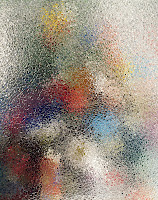Thursday entry: The Many Faces of Truth
“When you make a portrait of someone it involves you. You can take pictures of models, or pictures of pretty boys, and it’s just about you looking at something. It wasn’t until I was comfortable with myself that I started to make pictures of people who are really close to me. ” – Paul Mpagi Sepuya
The idea of portraying truth in an image seems to come naturally to the masters of photography and contemporary artists alike. Whether the portrait presents a family member who has passed, or the face of a familiar stranger, we acknowledge the human connection existing between viewer and the viewed. A portrait can reveal so much information about a person, so I understand why a lot of thought would go into its execution. It’s a noble endeavor that is also voluntary. I feel that this innate desire to represent someone in his or her own honest nature becomes somewhat problematic, because ultimately it is a contrived representation. There is a point where truth becomes irrelevant, and in its absence, I am more interested with the possibility of creating a narrative to establish that connection. Whether I am able to recognize my sister’s face in a photograph or the person she clearly is not, can only encourage a deeper interaction that requires one to draw from memory or some place other than the one which is presented.
The idea of portraying truth in an image seems to come naturally to the masters of photography and contemporary artists alike. Whether the portrait presents a family member who has passed, or the face of a familiar stranger, we acknowledge the human connection existing between viewer and the viewed. A portrait can reveal so much information about a person, so I understand why a lot of thought would go into its execution. It’s a noble endeavor that is also voluntary. I feel that this innate desire to represent someone in his or her own honest nature becomes somewhat problematic, because ultimately it is a contrived representation. There is a point where truth becomes irrelevant, and in its absence, I am more interested with the possibility of creating a narrative to establish that connection. Whether I am able to recognize my sister’s face in a photograph or the person she clearly is not, can only encourage a deeper interaction that requires one to draw from memory or some place other than the one which is presented.

Comments
Post a Comment